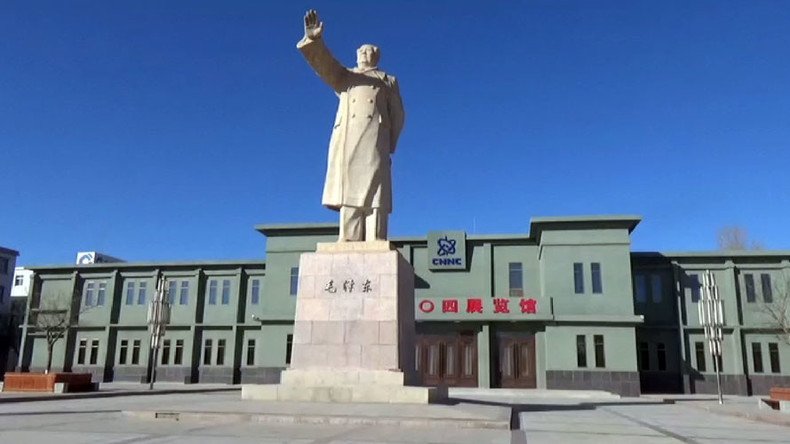404: China’s abandoned desert city built to develop Cold War nukes (VIDEO)

Secreted away in the Gobi Desert far from prying eyes lies a mysterious city known as ‘404’, which is said to have once been the focal point of China’s early nuclear weapons program.
Named after a company owned by the China National Nuclear Corporation, the city became a hub for some of the nation’s greatest nuclear experts during the Cold War era. Now, footage has emerged showing the sparse remains of the mysterious “atomic bomb base.”
Built in 1958, the Gansu province city has all the trappings one might expect of a Mao Zedong-era Chinese settlement: regimented streets, concrete block buildings and a stone effigy to the former chairman of the Communist Party of China.
But it’s the nuclear fission symbol located on the building behind the large Mao statue that points to the city’s incredible history, which was seemingly never given a proper name, only a code.
The symbol bears the initials CNNC of the China National Nuclear Corp, the chief manufacturer of Chinese nuclear weaponry.
It’s predecessor – the Ministry of Nuclear Industry – developed China’s first atomic bomb, which was tested at the Lop Nur site in the Gobi Desert in 1964. The ministry was later subsumed by the CNNC at the China National People’s Congress in 1988.
Pictures posted by website Sixth Tone show the gates of an abandoned 404 zoo, a children’s playground, as well as six power plant cooling towers.
A blog post by a man claiming to have been born in the settlement emerged in late 2014. Li Yang described how 404 had many features of a normal town – such as a theater, school, and local government – but was also a key cog in China’s plan to contend with Cold War superpowers the US and the Soviet Union.
“It also used to have the first military nuclear reactor of China,” Li said. “Today, it is basically deserted. It is said that there is an underground nuclear base. But I have never seen it.”
“The first generation of 404’s residents was also its builders. They are the best of every walk of life, chosen by the government from across the country to work together for China’s first atomic bomb, an important weapon for a country desperate to ensure its security from the United States and the former Soviet Union,” Li wrote.
It’s reported that only a smattering of 404 residents remain, with many people relocating to the western Gansu city of Jiayuguan.
Li’s account appears to back this up, with the ‘third generation of 404’ man stating that only elderly people remain in the city: “Only some old people live in that town, and they have decided to die there. I am afraid my hometown will disappear forever together with its last senior residents.”












